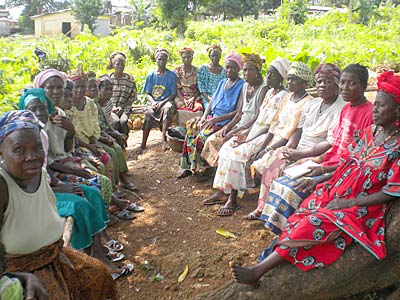Women, Peace & Security
Source: LSE
LSE’s Simone Datzberger explores the role of women’s networks in championing the rights of women in fragile states.
In 2011, the American Journal of Public Health estimated that 48 women are raped every hour in the Democratic Republic of Congo (DRC). Some experts have even suggested that the figure is much higher considering the number of unreported cases. Sadly, rape as a weapon of war is not exceptional in the Congo; rather it is pervasive in many fragile states. According to the Journal of Peace Research, roughly 75 per cent of all Liberian women were raped during the civil war. In the case of Bosnia, experts believe that between 20,000 to 50,000 were affected. In view of these shockingly high numbers, women are often portrayed as helpless and despairing victims. Strikingly, this often overlooks an important point.
Far more than victims
In politically suppressed and patriarchal societies, women risk speaking up and advocating their rights. In West Africa, for example, women cultivate peace, foster social cohesion and help rebuild war-torn societies. The war in Liberia serves as a case in point, when thousands of female protesters sang relentlessly until peace was finally negotiated. Other non-violent weapons included the threat to put a curse on the warring parties and a sex strike. Three years later, in 2006, Ellen Johnson Sirleaf became president of the country and the first female elected head of state in Africa.
Likewise, in neighbouring Sierra Leone, the peacebuilding process has been shaped by various civilian initiatives brought to life and led by women: the Fifty/Fifty Group or the Women’s Partnership for Justice and Peace are just a couple of examples. Their target is for women to take up 30 per cent of the seats in Parliament after the elections in November this year. Furthermore, the ambition is to raise this number to 50 per cent in five years’ time.
Regionally, organisations such as the West African NGO network, WIPNET (Women in Peacebuilding Programme) provide training and strengthen the capacities of local movements. Since 2004, about 400 women’s organisations have benefited from their work.
Globally, women campaign for equal and full participation in efforts to create and maintain international peace and security. For instance, the NGOWG (NGO Working Group on Women, Peace and Security), located next to the United Nations Secretariat in New York City, is comprised of 17 international non-governmental organisations. Their focus is on conflict-affected countries on the Security Council’s agenda. In each country, local groups identify women’s needs and concerns on the ground, which are then formulated into a common agenda at headquarter level.
Despite all these positive achievements and initiatives from diverse civilian spheres at the political and juridical levels, women are still often excluded from negotiations and crucial events. According to a UN report, in 24 major peace processes between 1992 and 2010, only 2.5 per cent of the signatories, 3.2 per cent of the mediators, 5.5 per cent of witnesses and 7.6 per cent of negotiators were women. Likewise, the OECD reports that only 20 per cent of aid allocated for peace and security in fragile states integrates a gender equality dimension. Yet, DFID’s operational plan (2011-2015) of the Policy Division for Governance and Fragile States holds that the “discrimination and lack of opportunities faced by girls and women requires a specific focus.”
These facts are even more disappointing considering the numerous instruments created in past decades by the international community to advance women’s rights in fragile states. In 1979, the UN General Assembly adopted the Convention on the Elimination of All Forms of Discrimination Against Women (CEDAW) followed by the Declaration on the Participation of Women in Promoting International Peace and Cooperation in 1981. Four world conferences on women were organised—in Mexico City (1975), Copenhagen (1980), Nairobi (1985), and Beijing (1995). The latter led to the introduction of the Beijing Declaration and Platform for Action, and successive Security Council resolutions, starting with resolution 1325 in 2000 for women’s participation in all aspects of peacekeeping, peacemaking and peacebuilding. Resolution 1325 subsequently led to four more between 2008-2010*. There have also been several reports from the Secretary General, workshops and high-level stakeholder meetings on women, peace and security.
While rhetoric on enhancing women’s rights and participation in fragile states is pervasive, de facto implementation remains slow.
Challenges
Sarah Taylor, Executive Coordinator of the NGOWG highlighted the difficulty of obtaining funds for the schemes of women’s rights activists as one of the reasons why action on women’s rights is so sluggish. More financial and political resources are needed for early warning systems to monitor and report rights violations. Even if funds are made available, more long-term commitment is required, as things simply do not change overnight. In addition, many women’s rights activists work in remote and dangerous areas. Funding their activities involves certain risks, which many donors are not willing to take.
Likewise, many fragile states experience serious shortcomings in laws and practices to protect women’s rights. Weak local justice systems and impunity for perpetuators are common in post-conflict societies.
Advancing women’s rights is therefore not a movement lacking ideas, initiative or instruments; women are able to take matters into their own hands. Nevertheless, they still often remain excluded from important peacebuilding processes.
Members of the Women's District Farming Association in Sierra Leone
__________________________________________________________________
*The imperative of resolution 1325 fed into four subsequent resolutions, namely, 1820 (2008), 1888 (2009), 1889 (2009) and 1960 (2010).

